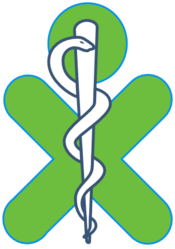Animal health
Translate this page with Google -español -български -中文(中国大陆) -中文(台灣) -hrvatski -čeština -dansk -Nederlands -suomi -français -Deutsch -Ελληνικά -हिन्दी -italiano -日本語 -한국어 -norsk -polski -português -română -русский -svenska
The Relevance of Animal Health to Human Health
- Children in rural communities are often directly engaged in the care of their family's livestock and they may live in close association with domesticated animals.
- Improvements in the health of livestock can lead directly to improvements in nutritional and economic status as well as water/sanitation and environmental conditions. All of these can have a critical impact on learning.
- Human health can be adversely impacted by disease in livestock through zoonoses (diseases passed from animals to humans). Examples include some of the most pressing public health concerns in the developing world (e.g. parasitic diseases, avian flu, etc.).
- Education on topics of biological interest (e.g. reproduction) that may be culturally sensitive when approached in the context of human biology, may be less controversial in the context of animal husbandry.
The Relevance of Animal Health content across the target age range
- In it's simplest form (a wikislice on domesticated animals), this content could serve as a "virtual petting zoo" for younger ages.
- In more sophisticated forms (for older children and parents), it could provide a "para-veterinary" reference library.
- A well-developed Animal Health content module can provide a number of opportunities to bridge a Biology curriculum and a Health curriculum. (Example essay assignment: Describe the function of the 4-chambered stomach of a ruminant and compare it's function to the crop of domesticated fowl). See also this note from the Galadima, Nigeria pilot.
Special Localization Issues
Different regions will have different species of domesticated animals (e.g. llamas in Peru, water buffalo in SouthEast Asia, etc.) and even where the same species are domesticated, different breeds or other conditions may exist that will require some careful tailoring to local circumstances, above and beyond translation into local languages. Input from sources familiar with local conditions and practices will be very important.
Content resources
Wikislice on Livestock
- See linked livestock names on this page: Animal_health/Livestock and Section A of deliverables. Additions to this list would be valuable, please add any relevant Wikipedia links.
- The general idea is to accumulate a small wiki-slice worth of Wikipedia content (small enough to allow for the inclusion of a good number of pictures) that covers the most common domesticated animals, especially those that might be found in target communities. This portion of the content bundle should be developed with the younger end of the age range in mind, but still sufficiently encyclopedic that it still can teach them something about the animals with which they are familiar. Ideally, this would allow the child of a llama herder to get a sense of what life is like for a yak herder's child, and vice versa.
Content by/for children
There are a number of organizations in the United States focusing on youth that may be resources for child-developed or child-focused content. See also Section B of deliverables.
- Wouldn't it be great to have kids use the XO to take pictures of their family herds/flocks in a world-wide "OLPC County Fair". This OLPC Mongolia sub-page already has early entries in the cattle and goat categories.
- 4-H in the United States is a youth organization administered by the Cooperative Extension System of the United States Department of Agriculture (USDA)
- National 4-H Headquarters
- 4-H World Atlas
- National Directory of 4-H Council
- National Directory of 4-H Materials
- 4HUSA.org, an interactive 4-H online community and a resource for 4-H information.
Organizations
Many non-profit or government supported or affiliated organizations are working in this area. It should be possible to gather practical para-veterinary reference materials, ideally those developed by local partners within target communities. See also Section C of deliverables.
Libraries and Web Collections
- US National Agricultural Library
- NetVet and the Electronic Zoo
- USDA Agricultural Research Service Healthy Animals web-site
- World Organization for Animal Health (OIE)
- International Fund for Agricultural Development, Rural poverty knowledgebase (UN IFAD).
- American Veterinary Medicine Association AVMA
Project Deliverables
These are in only rudimentary form at this point. Input from others would be very helpful.
People
- Please add your name here if you would like to contribute.
- cjl
To Do
- Collect wikipedia links for eventual wikislice development as introductory materials. See Animal_health/Livestock page.
- Explore U.S. govt. websites for suitable material (most will be public domain).
- Make contacts with relevant organizations and look into availablility of materials, ideally those developed in target communities (pre-localized and locally relevant).
- I'll be reaching out to Heifer, I've donated to/through them and I'm hoping they'll take my call :-) Cjl 17:20, 1 March 2008 (EST)
- Further develop picture of exactly what the deliverables of this effort will comprise.
- Consider age-appropriate stratification of content. On that 4th grade field trip you pet the cow's nose and saw the milking barn, it wasn't until the 10th grade field trip that they showed you the artificial insemination process.
- Identify volunteers to assist with conversion of collected content into a bundle(s) per guidelines on Creating_a_collection.
